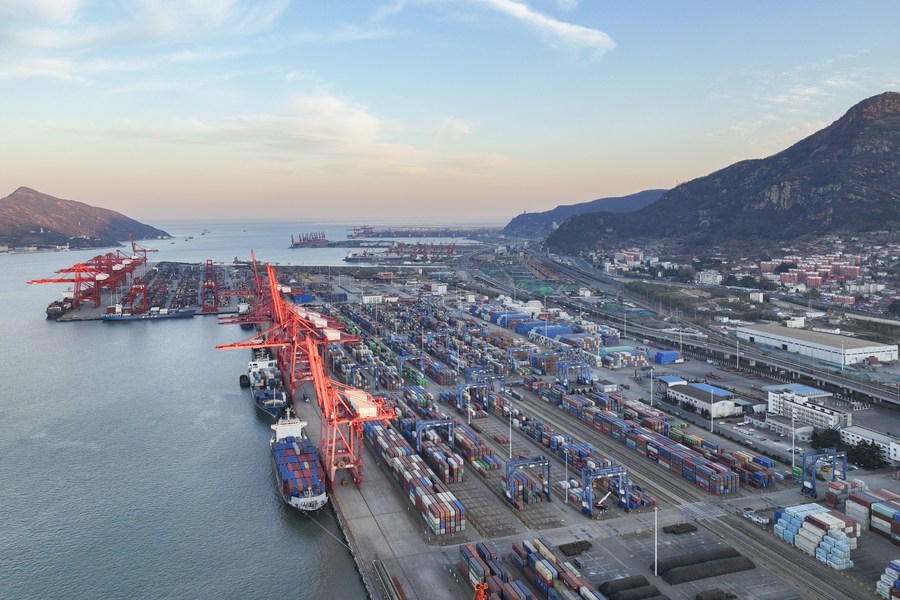Source: China Daily

Aerial photo taken on Dec 1, 2021 shows the container terminal in Lianyungang, East China's Jiangsu province. [Photo/Xinhua]
With participating countries seeing gains from the Regional Comprehensive Economic Partnership, experts believe the free-trade pact is fulfilling its promise to drive economic growth across the region.
"The implementation of the RCEP should serve as a key engine of trade and investment in ASEAN in 2022 and beyond," said Sithanonxay Suvannaphakdy, lead researcher of the ASEAN Studies Centre at Singapore's ISEAS-Yusof Ishak Institute.
Sithanonxay told China Daily that the trade pact, which came into force on Jan 1, will eliminate as much as 90 percent of tariffs on goods traded between its signatories over the next 20 years.
China, one of the top three export markets of the Association of Southeast Asian Nations, will this year eliminate about 70 percent of its tariffs on products from ASEAN, he said.
He added that ASEAN countries will eliminate about 75 percent of their tariffs on products imported from China.
The RCEP comprises the 10 members of ASEAN along with China, Japan, South Korea, Australia and New Zealand.
Cambodian Commerce Minister Pan Sorasak said on Monday that the trade deal is a key driver for economic recovery in the participating countries both during and after the pandemic.
The minister was speaking at a workshop titled "RCEP: Implications, Challenges, and Future Growth of East Asia and ASEAN" that was held by the Cambodian Ministry of Commerce and the Economic Research Institute for ASEAN and East Asia.
According to studies cited in a book launched at the event, the RCEP can boost ASEAN's real GDP by as much as $160 billion in 2035 and increase the value of exports and imports by more than $500 billion.
Pan Sorasak said Cambodia is expected to gain from the trade agreement through a 7.3 percent increase in exports, a 23.4 percent rise in investment, and 2 percent growth in GDP. Cambodia is the ASEAN chair this year.
A study by the World Bank in February said the East Asia and Pacific region can reap significant benefits through further liberalization, with Cambodia, Vietnam and other lower-middle-income countries gaining the most from the RCEP.
"The region will also see an additional 'kick' in productivity as greater openness brings additional skills, technology, and capital," the research said.
Some countries have already begun to experience the benefits of the RCEP. In Thailand, the value of exports by companies certified under the RCEP rose by more than 200 percent in February from the month before, news website The Nation said.
Thailand's exports reached 1.16 billion baht ($35 million) in the first two months of 2022, the report said, citing Pitak Udomwichaiwat, the director-general of Thailand's Department of Foreign Trade. China was the second-biggest importer of Thai goods under the RCEP at 453.95 million baht, after Japan's 540.36 million baht.
As ASEAN's biggest trading partner, China has repeatedly emphasized that the two sides need to further enhance their cooperation to promote regional free trade.
"China has been very consistent in terms of trade liberalization and this kind of multilateral trading system," said Chheang Vannarith, president of the Asian Vision Institute think tank in Cambodia.
He said this is good for the whole region because China is the largest market in the RCEP with an increasing consumption power.
"I think it will be a win-win scenario," Chheang Vannarith said, noting that greater economic interdependence between China and ASEAN will contribute not only to regional prosperity but also stability and security.